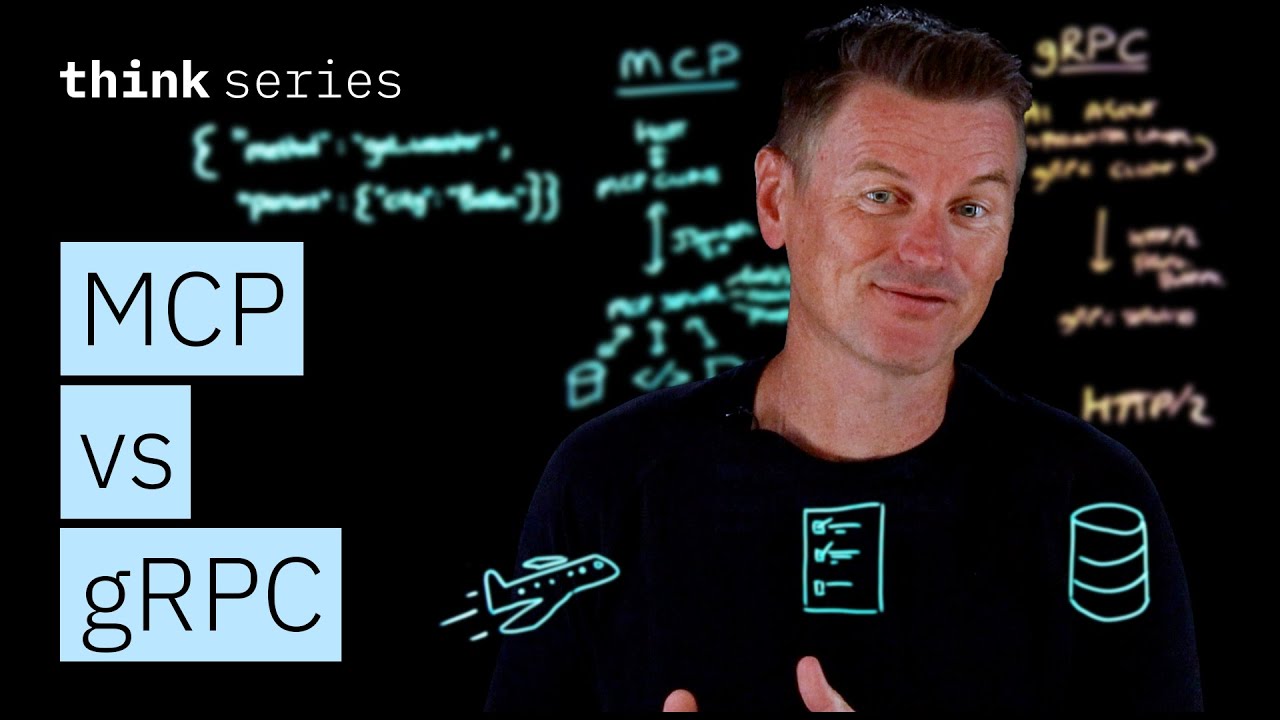The video compares MCP, an AI-native protocol with natural language descriptions enabling LLMs to dynamically discover and use tools and resources, to gRPC, a high-performance RPC framework designed for deterministic systems that lacks semantic context and requires adapter layers for AI integration. It concludes that MCP is ideal for AI agent discovery and interaction, while gRPC excels in scalable, high-throughput workloads, suggesting a complementary use of both protocols in advanced AI systems.
The video discusses the challenge AI agents powered by large language models (LLMs) face when interacting with external services like booking flights, checking inventory, or querying databases. Since LLMs are limited by their context window and training data, they cannot hold all necessary information internally. Instead, they need to query external systems on demand to fetch real-time or large-scale data. Two protocols that help facilitate this connection are MCP (Model Context Protocol), introduced by Anthropic in late 2024 and designed specifically for AI agents, and gRPC (Google Remote Procedure Call), a well-established RPC framework used for connecting microservices with high performance but not originally designed for AI.
MCP is an AI-native protocol that provides three key primitives: tools (functions like “get weather”), resources (such as database schemas), and prompts (interaction templates). These primitives come with natural language descriptions that LLMs can understand, enabling runtime discovery of capabilities. When an AI agent connects to an MCP server, it can query what tools and resources are available and receive human-readable guidance on when and how to use them. This design allows agents to dynamically adapt to new capabilities without needing retraining, making MCP well-suited for the probabilistic nature of AI agents.
In contrast, gRPC offers efficient binary serialization through protocol buffers, bidirectional streaming, and code generation, making it fast and reliable at scale. However, gRPC provides structural information rather than semantic context, meaning it lacks the natural language descriptions that LLMs require to understand when and why to use a service. As a result, developers often need to add an adapter layer that translates natural language intent into specific RPC calls. This extra step is necessary because gRPC was designed for deterministic systems where the caller knows exactly what to call and when, unlike AI agents that operate probabilistically.
Architecturally, MCP uses JSON-RPC 2.0 for communication between a host application, MCP clients, MCP servers, and external services. This text-based protocol is human- and LLM-readable but more verbose. MCP’s built-in discovery mechanisms allow clients to list available tools, resources, and prompts with natural language descriptions. On the other hand, gRPC uses HTTP/2 and protocol buffers for communication between AI agents, gRPC clients, and gRPC services. It supports multiplexing and streaming, enabling multiple parallel requests and real-time data flow. However, gRPC’s discovery is limited to server reflection, which provides protobuf definitions without semantic explanations, necessitating the adapter layer.
In summary, MCP was created specifically for AI agents, focusing on helping LLMs understand what tools do and when to use them through natural language descriptions and runtime discovery. gRPC, while offering superior speed, scalability, and efficient communication, requires additional translation layers to bridge the gap between AI agents’ probabilistic nature and gRPC’s deterministic design. As AI agents evolve from simple chatbots to complex production systems, the video suggests a complementary approach: using MCP as the front door for AI discovery and gRPC as the engine for high-throughput workloads.
